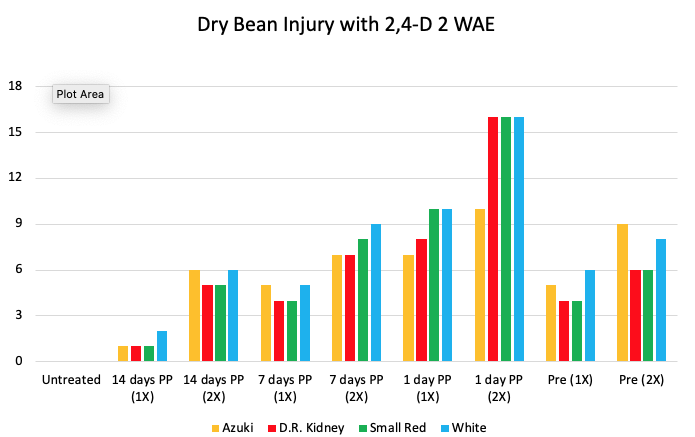Historically growers in Ontario have used conventional tillage practices in the production of dry beans. Adoption of reduced-, strip- and no-tillage practices, has been increasing in the province. With improved equipment technology some dry bean growers have been working towards transitioning into these reduced tillage systems. Strip-till has shown promise as a nice compromise between conventional tillage and no-till. Dry bean growers can benefit from the tillage within the strip creating favourable conditions for planting and delivery of fertilizer right in the root zone. The benefits from reduced tillage such as improved soil health and protection from soil erosion can be realized from a strip-till system.
Background
With the adoption of reduced tillage practices some challenges have developed. Glyphosate-resistant Canada fleabane has spread rapidly throughout much of Ontario, including many of the dry bean growing regions of the province. Glyphosate-resistant Canada fleabane is adapted to reduced tillage. A lot of research has been conducted on herbicide options for the control of this weed in soybean. Saflufenacil (Eragon), metribuzin (Sencor) and 2,4-D ester have proven to be effective options. Preliminary experiments found that there is potential for the use of 2,4-D ester in dry bean production. Further work was required to determine sensitivity of dry bean market classes to 2,4-D ester and to determine the ideal application timing.
Evaluations
Between 2016 and 2018, six dry bean tolerance trials were conducted to evaluate 2,4-D applied preplant and pre-emergence across four dry bean types (azuki, dark red kidney, small red, and white). Trials were established in a strip-till system using fall established strips with no strip freshening in the spring. 2,4-D ester was applied at 320 ml/ac (1X) and 640 ml/ac (2X) at 14, 7, and 1 day pre-plant and pre-emergence (3 days after seeding). The 1X rate used reflects the current registered use pattern for pre-plant application in soybean. 2,4-D ester is not currently registered for use in dry bean. Trials were evaluated for visible crop injury, stand count, biomass, height, maturity and yield. Trials were maintained weed-free throughout the growing season.
Results
The application of 2,4-D ester caused visible crop injury across all bean types at all application timings when evaluated 1, 2, 4 and 8 weeks after emergence (WAE). As the pre-plant application interval decreased the level of injury increased. The highest bean injury occurred when 2,4-D was applied at the 2X rate 1 day prior to seeding. Visible bean injury was greater at the early evaluation timings, but injury was transient with low levels of injury 8 WAE. The 1 day pre-plant application resulted in a decrease in plant stand and plant height at the 2X rate. Plant biomass was reduced with the 7 and 1 day pre-plant applications. Crop maturity and yield were not negatively affected by the application of 2,4-D ester at any of the application timings across all bean types. Azuki beans were the most tolerant to the pre-plant applications of 2,4-D. Figure 1 demonstrates the impact of 2,4-D application timing on injury of four market classes of dry beans.

Conclusions
The results from this study found that at the proper application timing 2,4-D ester can be used safely in dry bean for the control of glyphosate-resistant Canada fleabane. Recommended timing is 14 days pre-plant at the current soybean label rate of 320 ml/ac. Currently, 2,4-D ester is not registered for pre-plant or pre-emergence application in dry bean. Always follow label directions. Some export markets may have restrictions on MRLs for unregistered products, and detection of residues could significantly impact trade. It would be our hope that a registration could be achieved through the User Requested Minor Use Label Expansion Program.
This article was written by Todd Cowan and Peter Sikkema.